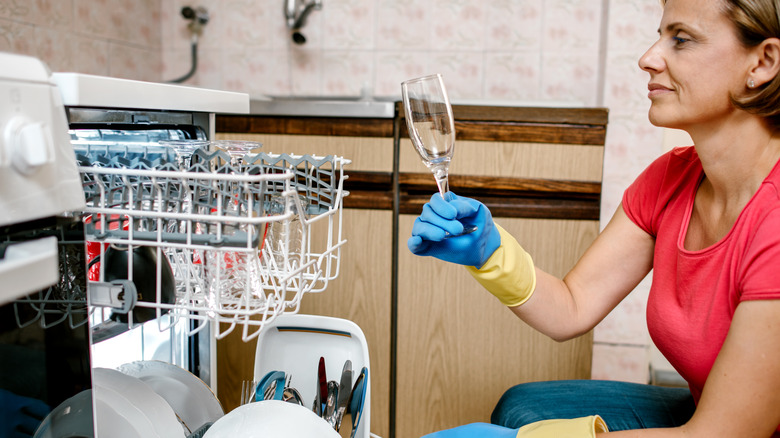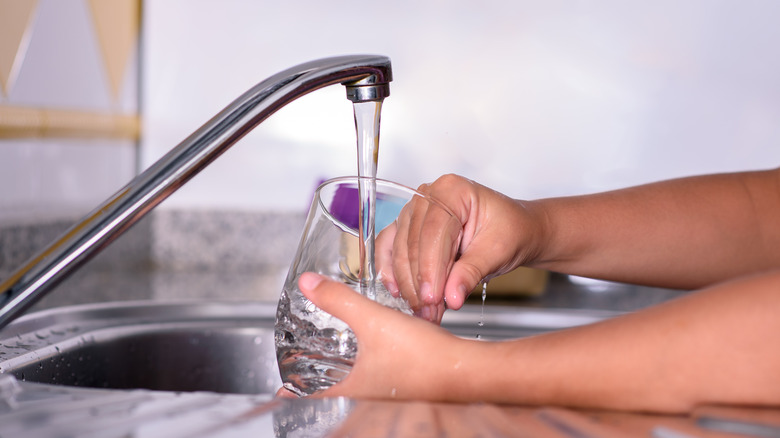The Genius Way Martha Stewart Brings Sparkle & Shine Back To Cloudy Glasses
Many of us have the good fortune to use a dishwasher on a near-daily basis. It's a time saver, especially with a big family. We're used to adding the soap, turning it on, then putting everything away once it's dried, end of story. But one unfortunate side effect can be cloudy-looking glassware. Luckily, you can still enjoy the convenience of the dishwasher and have sparkling glasses with Martha Stewart's vinegar hack for clearing up the cloudiness.
Hard water is the culprit for the haze, and your water's relative hardness or softness depends on where you're located. Though it's safe to drink from a milky glass, the dinginess can make your glasses look like remnants from an archeological dig. Of course, Martha's mastered the process of restoring your glassware as she does with virtually every household chore. Her vinegar cleaning method, outlined below, is really the most precise way to solve the problem because you'll be removing the film by hand.
How to de-cloud your glasses
The way to de-cloud your glasses is to first assemble the troops: distilled white vinegar, milky glassware in need of love, and a plastic dishware scrubber. You can plan to use your clean kitchen sink for a whole slew of glasses, or a mixing bowl for just two or three. Have a lint-free towel for drying nearby, as well as rubber kitchen gloves. If you're dealing with a large number of glasses you'll also want to have one and maybe two full bottles of white vinegar.
Step one is to fill a large bowl with hot water and submerge the closed vinegar bottles to let them warm up for a couple of minutes. Then fill up the mixing bowl or your sink with enough warm white vinegar to cover the glasses and let them soak for a full hour. Grab your plastic scrubber (wear your rubber gloves to protect your skin) and go to town. Then, rinse in hot water and dry them immediately with your towel so more mineral drops don't form.
Why this works & alternatives
Distilled white vinegar is perfect for this job because it contains a small amount (5% and the rest is water) of acetic acid. Acetic acid acts like a solvent, a substance that dissolves the minerals so they break free from your glassware. It's completely safe to ingest small amounts of distilled vinegar yet the liquid is strong enough to melt the cloudiness away.
Vinegar is a versatile cleaning supply because it can dissolve grime from a variety of surfaces, so it's convenient to have a bottle or two on hand. But what if you only have half a bottle of vinegar left? You might try transferring what you have into a clean spray bottle and then spraying the surface of each glass thoroughly and letting them sit for an hour before scrubbing, rinsing, and drying them.
Despite your best efforts, you might be dealing with permanent cloudiness and may need to replace your glasses. Vera Peterson, President of Molly Maid, tells Martha Stewart, "If you angle the glass toward the light, you'll probably see shades of pink, purple, brown, or blue. At that point, it's unlikely you can restore the glasses."

